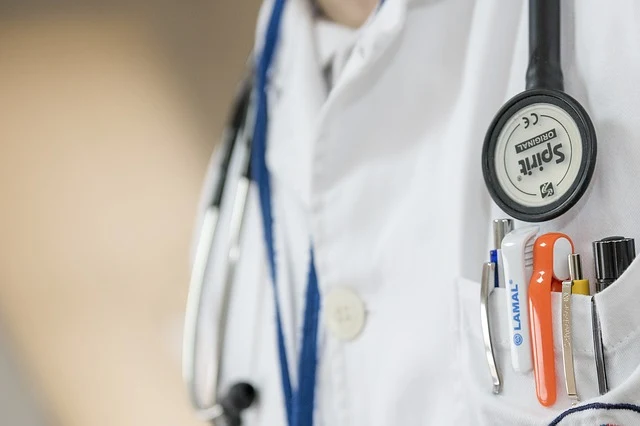
7 Best Healthcare Cybersecurity Tips to Protect Data

Healthcare
industry is one of the most widespread industries in the world. As the world is
moving closer and closer towards digitization this has affected the medical
sector as well. Most of the healthcare systems are now online, databases are
managed and connected and utilize the power of internet services.
The
databases hold a huge amount of information and data including confidential and
personal records of patients, their family history, transactional details, and
credentials, etc.
This
data is available in bulk and with the increase in digital devices being used
in healthcare, the surface area for cyber-attacks by criminals has increased
multifold. The security in the healthcare industry is weak and below par making
it easy to target.
Since the security and safety
of sensitive data of such many patients lie in the hands of the medical
industry it is imperative that the required security measures are undertaken
well within time and cyber-attacks are prevented.
1. Training
Employee training is one of the first and most important tips to prevent
cybercrime. Naive employees tend to panic in case the system is attacked and
tends to make hasty decisions that may or may not improve the situation.
Well informed and trained
employees have knowledge about responding to a disaster situation and its
prevention. They are also trained about the HIPAA Controls that safeguard
patient information.
An informed workforce comes
in handy in preventing and reacting to a disaster situation more efficiently.
2. Real-Time Evaluation
To prevent any cases in which false positive or false negative alarms
cause wastage of resources and effort, it is best to use technology that
monitors devices and data in real time.
Keeping a close track of security updates and upgrades, new security
patches, existing vulnerabilities can help in identifying false leads for
attacks and prevent unnecessary effort in the wrong direction. It is also
helpful if regular checks and monitoring procedures are automated. This helps
do away with the chance of a lapse or any sort of human error in tracking,
updating or monitoring services.
3. Access Control
Considering the widespread nature of the healthcare industry and number of
employees providing services to patients at different levels, it is essential
to control the amount of information that each employee can access.
Ideally, each person should
be given access to data that is necessary for him/her to perform the required
services.
No more information than
necessary must be made available, to help prevent uncalled cyber
vulnerabilities.
4. Encryption using SSL and
Wildcard SSL
The most basic step to be taken to ensure the safety of data is
encryption of data. All forms of data transmitted to or from the databases and
from or to any other device in the system must be encrypted.
One of the best ways to
ensure the safety of data while it is being transmitted is the use of SSL and if
healthcare unit/industry carries subdomains like blog.yourdomain.com,
mail.yourdomain.com, payment.yourdomain.com then one of an ideal SSL is there
naming Wildcard SSL Certificate.
SSL is the abbreviation of
Secure Socket Layer and is used to secure data while it
is being forwarded from the browser go through the various servers and then
till the destination.
A wildcard SSL is like a normal SSL and in addition, gives one advantage
which is that a single wildcard SSL certificate can secure the main domain and all
its subdomains.
5. Limited devices in the
workspace
As the number of devices on a network increases, the chances of a cyber-attack
automatically increase. Each of these devices may have different levels of
security and hence one device may be more vulnerable than the others and hence
act as a weak spot and an easy target for the launch of cybercrime.
6. A pre-planned disaster
recovery system
A disaster recovery scheme or a plan of action planned well in advance
must be in the place that guides everyone about the steps to be taken in case
of a cyber-attack.
A well planned and managed
system helps reduce the level of harm caused and ensures that disaster
solutions are followed with the best possible efficiency.
With a predetermined scheme, everyone
is mentally prepared to handle a digital mishap caused by crooks and hence can
act according to plan and the number of decisions taken in haste reduce
considerably.
Massive data breaches may cause a whole lot more
harm if not dealt with properly. Hence it is imperative to have a contingency plan
in place.
7. The role of a firewall
A firewall behaves like the first line of defense against any approaching
threats as these get filtered out by the firewall.
It acts as a deterrent for
intruders who wish to access sensitive data held by the databases or other
transaction related data that is critical to the customers, patients or their
families.
At the end:
The
healthcare sector takes various precautions and measures to prevent and handle
medical mishaps to the best of their capabilities taking into consideration
even a massive scale epidemic.
In
a similar way, cybersecurity professionals in healthcare must also plan,
prepare and execute measures to safeguard data and credentials of this large
number of patients and employees and all those associated to their sector and
institutions.
Being well prepared for cyberattacks
may lead to certain investments in infrastructure, software, updates, etc. but
in the long run, they help avoid disasters that can potentially cause loss of
resources, data costing a lot more.
Popular Posts
Like Us On Facebook
Copyright © 2025 - TechCrack - Tech In Every Thing | All Rights Reserved




![Performance Marketing - What Is it & How It Works [+ 6 Tools You Can Use]](https://blogger.googleusercontent.com/img/b/R29vZ2xl/AVvXsEj0akcIPU36HHfqWoYrb2LCMNG8OvxPb9drUYKWJZvSXmfbJG0OrjN5jfzTFDmT-9MKcuZt-G-66PiLlIVjgX1DwCNzHeIMW0pjW7W3IB2rZYzx4ISbL2T6JC4M38eubqHxQ3e71l2_n7oxh2f2QdV3d1prJ6z9HQNsSyfjtO18diLxEZg-5wD-I6RINFY/w680/performance_marketing-min.png)





0 Comments